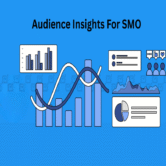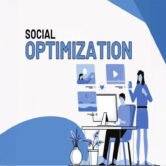
Explain traffic generation through optimized bios
Introduction
In the world of digital branding, an optimized bio is more than a static introduction—it’s a strategic tool for driving web traffic and conversions. Whether on LinkedIn, Instagram, YouTube, Twitter, or author bylines on blog platforms, a well-crafted bio works as a high-visibility channel that informs, persuades, and redirects the audience to key links. For businesses, creators, marketers, and consultants, bios play a critical role in search discoverability, brand positioning, and ultimately, traffic generation. In a landscape where attention spans are short and link placements are few, a compelling, keyword-rich, and action-oriented bio makes the difference between passive presence and active engagement.
Incorporate high-impact keywords for search visibility
Search engines and in-platform algorithms use bios to determine relevance and indexing. By including industry-specific keywords like “SaaS marketing expert,” “certified nutritionist,” or “digital transformation consultant,” your bio becomes searchable both on Google and within platforms like Instagram or LinkedIn. For example, a YouTube channel bio that mentions “AI tutorials for Indian developers” ranks better for relevant queries and drives more niche traffic.
Use a strong call to action to guide user flow
Traffic does not happen unless visitors are told what to do next. A call to action (CTA) like “Download our free guide,” “Book a free strategy call,” or “Join our webinar” adds purpose to the bio. It guides users to click the provided link, boosting website sessions, downloads, or subscriptions. CTAs placed at the end of bios act as conversion bridges from curiosity to click-through.
Add a link-in-bio or tracking tool for click analytics
Platforms like Instagram and TikTok allow only one clickable link in the bio. Tools like Linktree, Beacons, or Carrd enable creators and marketers to showcase multiple links through a single landing page. These tools also offer click tracking, helping users measure traffic sources and prioritize content updates. This is especially effective for campaign-specific bios used during product launches or webinars.
Match tone and bio structure to the platform
A bio on Twitter may be short and witty, while a LinkedIn bio can be longer and achievement-focused. Platform-optimized bios match tone to audience expectations, increasing follow-through and interaction. Instagram bios may include emojis and hashtags for visibility, while Quora bios may highlight subject-matter expertise to boost authority. Structuring bios per platform maximizes visibility and traffic flow.
Use hashtags and tags for discoverability
Strategic use of hashtags and tags in bios—particularly on Instagram, Twitter, and TikTok—expands reach and directs targeted users to your profile. A bio with hashtags like #DigitalCreator, #FinanceTipsIndia, or #CareerCoach allows content to be indexed and discovered by searchers. For professionals, tagging company names, certifications, or communities boosts relevance and traffic potential through platform algorithm alignment.
Embed contact and website details with personalization
Many bios allow contact buttons, email forms, or direct links to portfolios and websites. Adding a clickable website with a unique UTM parameter lets you track traffic sources via Google Analytics. Use personalized URLs like “www.yoursite.com/bio” to segment and measure how bio views translate into traffic and leads. Contact info, when placed clearly, reduces friction for inquiries and conversions.
Include social proof or authority indicators
A bio that highlights credibility—such as “Featured in Economic Times,” “10k+ students trained,” or “TEDx Speaker”—increases the likelihood of profile views turning into clicks. Authority builds trust, and trust increases curiosity. Users are more inclined to explore links from someone they perceive as trustworthy or influential, making the bio a traffic-conversion catalyst.
Keep bios updated for relevance and campaign alignment
An outdated bio reduces click-through performance. Updating bios regularly to reflect ongoing campaigns, product launches, or time-bound offers keeps the profile fresh and relevant. For instance, a bio that temporarily promotes a “Summer Bootcamp Registration” or “50% Off SaaS Demo Signups” encourages urgent action. Updating every quarter ensures your audience always sees the most relevant reason to click.
Optimize bios for mobile-first experiences
Since most social media platforms are accessed via mobile, bios must be concise and mobile-friendly. Use bullet points, emojis for visual breaks, and short URLs that don’t wrap awkwardly. Link previews and CTA buttons should open seamlessly on mobile to avoid bounce. Optimizing layout, wording, and link behavior for small screens ensures bio traffic actually lands and engages with the destination content.
Conclusion
An optimized bio is a powerful, always-on micro-marketing tool that blends discoverability with conversion potential. From keyword integration and clear CTAs to contact links and credibility highlights, each element of a bio contributes to how users interact with your digital identity—and whether they take action. In a crowded content landscape, a well-optimized bio ensures that fleeting attention becomes measurable web traffic. For individuals and brands alike, strategic bios are gateways to visibility, interaction, and lead generation.
Hashtags
#optimizedbios #digitalbranding #trafficgeneration #biotraffic #linkedinbio #instagrammarketing #CTAbio #linkinbio #linktree #socialmediaSEO #profileoptimization #digitalidentity #contentpromotion #websiteclicks #personalbranding #leadgeneration #SaaSmarketing #influencermarketing #mobileUX #biostrategy #clickthroughrate #authorbio #bioengagement #keywordoptimization #profiletraffic





